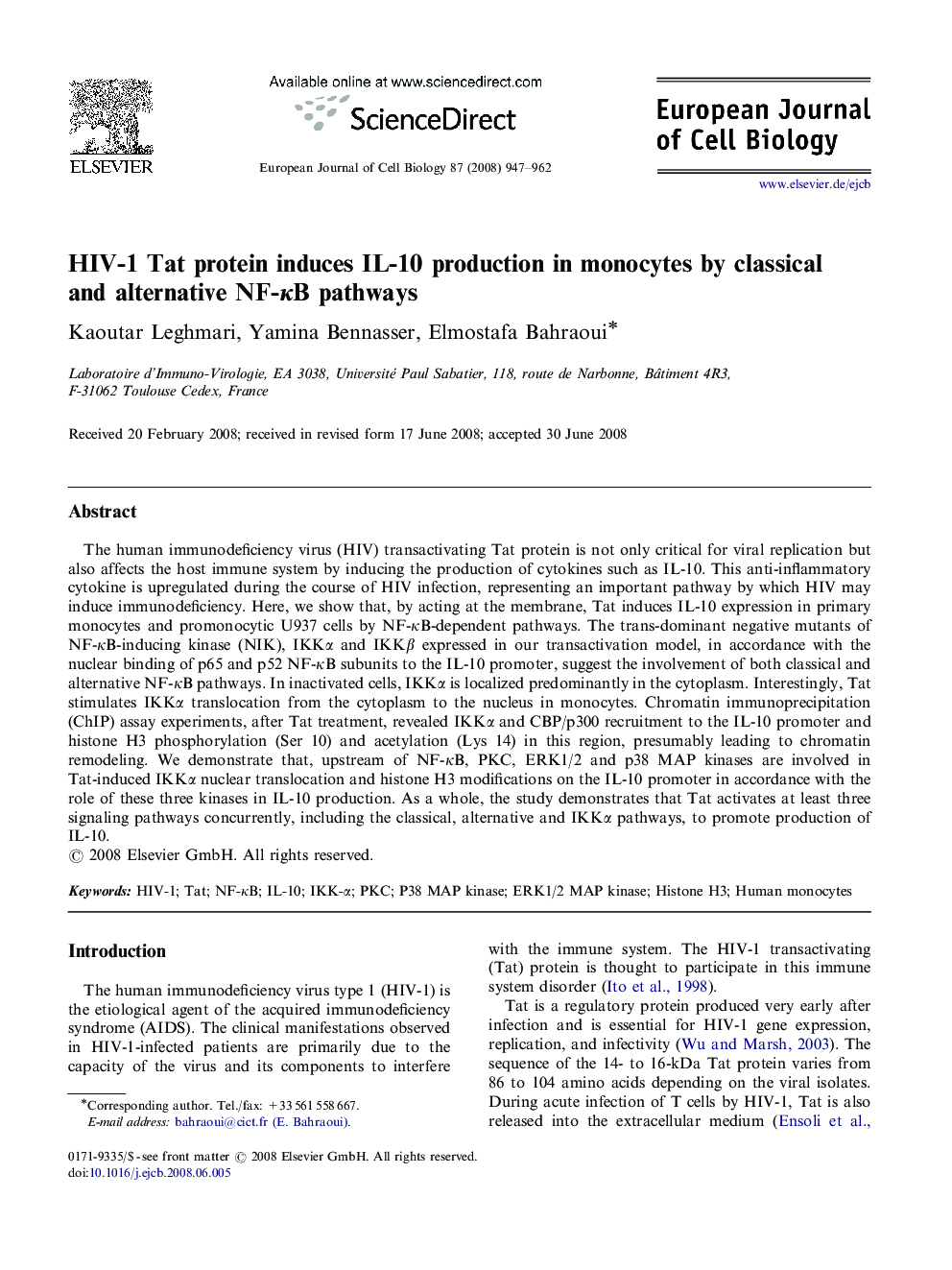| Article ID | Journal | Published Year | Pages | File Type |
|---|---|---|---|---|
| 2179085 | European Journal of Cell Biology | 2008 | 16 Pages |
The human immunodeficiency virus (HIV) transactivating Tat protein is not only critical for viral replication but also affects the host immune system by inducing the production of cytokines such as IL-10. This anti-inflammatory cytokine is upregulated during the course of HIV infection, representing an important pathway by which HIV may induce immunodeficiency. Here, we show that, by acting at the membrane, Tat induces IL-10 expression in primary monocytes and promonocytic U937 cells by NF-κB-dependent pathways. The trans-dominant negative mutants of NF-κB-inducing kinase (NIK), IKKα and IKKβ expressed in our transactivation model, in accordance with the nuclear binding of p65 and p52 NF-κB subunits to the IL-10 promoter, suggest the involvement of both classical and alternative NF-κB pathways. In inactivated cells, IKKα is localized predominantly in the cytoplasm. Interestingly, Tat stimulates IKKα translocation from the cytoplasm to the nucleus in monocytes. Chromatin immunoprecipitation (ChIP) assay experiments, after Tat treatment, revealed IKKα and CBP/p300 recruitment to the IL-10 promoter and histone H3 phosphorylation (Ser 10) and acetylation (Lys 14) in this region, presumably leading to chromatin remodeling. We demonstrate that, upstream of NF-κB, PKC, ERK1/2 and p38 MAP kinases are involved in Tat-induced IKKα nuclear translocation and histone H3 modifications on the IL-10 promoter in accordance with the role of these three kinases in IL-10 production. As a whole, the study demonstrates that Tat activates at least three signaling pathways concurrently, including the classical, alternative and IKKα pathways, to promote production of IL-10.
